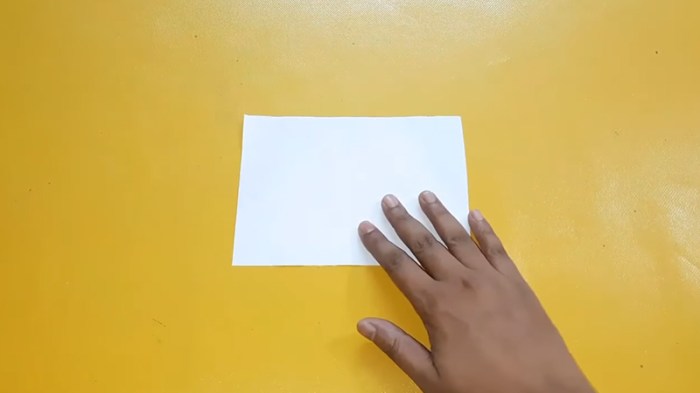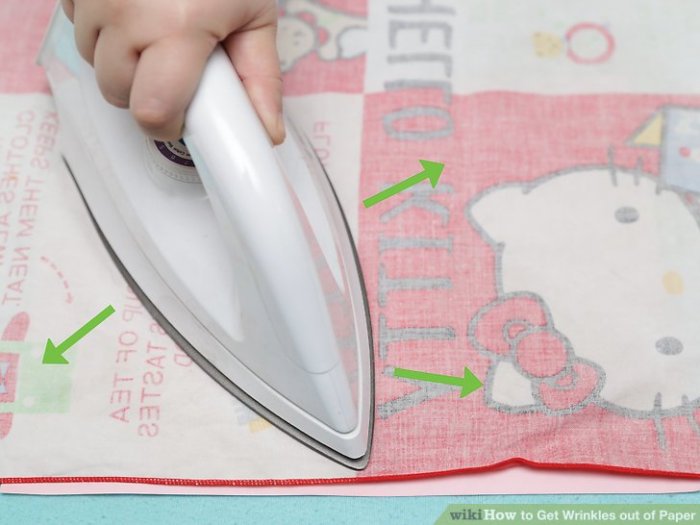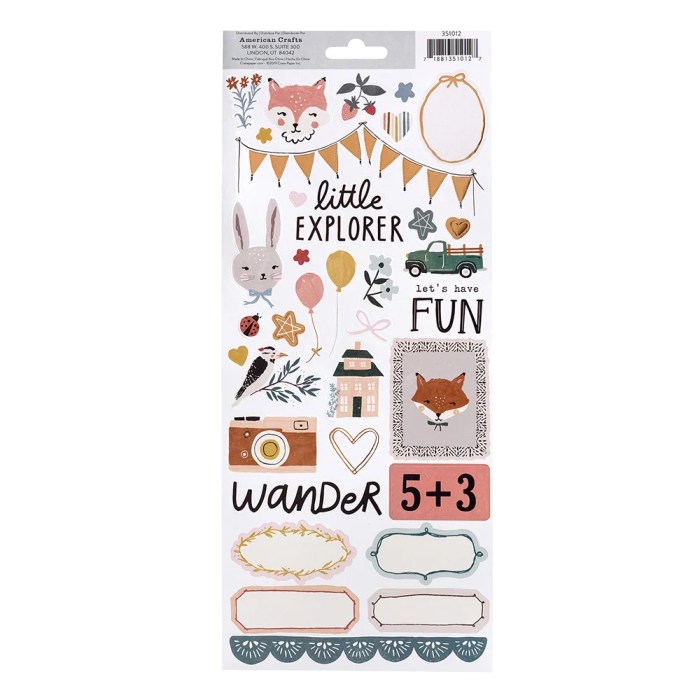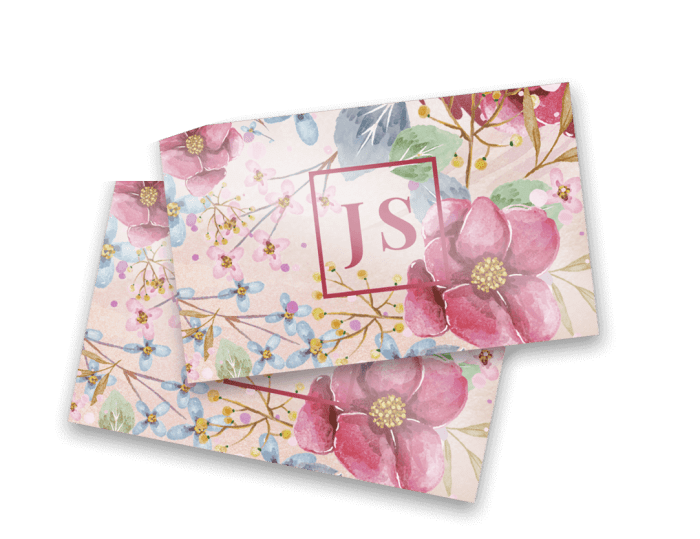Get Wrinkles out of Paper: This guide delves into the frustrating world of paper wrinkles. From the subtle creases on a delicate document to the unsightly folds in packaging, we’ll explore the causes, solutions, and prevention strategies. We’ll examine different paper types, handling methods, and storage techniques to help you keep your documents and creations looking their best.
We’ll cover everything from identifying various types of wrinkles and their causes to a range of methods for smoothing and flattening them. We’ll also discuss how to prevent wrinkles in the first place through proper handling and storage. The goal is to provide a comprehensive resource for anyone dealing with wrinkled paper, from home document organizers to professional printers.
Defining the Problem

Wrinkles in paper are a common issue, affecting the aesthetic appeal and usability of various paper products. From delicate documents to sturdy packaging, these imperfections can detract from the intended presentation and function. Understanding the different types of wrinkles, their causes, and the impact they have on various applications is crucial for effective paper production and handling.Paper wrinkles, while seemingly minor, can significantly impact the overall quality and presentation of documents and packaging.
This issue is exacerbated by the variety of paper types and the diverse ways in which they are handled, leading to a range of wrinkle severity and types. Recognizing these nuances is vital to preventing and mitigating the impact of wrinkles.
Types of Paper Wrinkles
Wrinkles in paper manifest in various forms, each with distinct characteristics and causes. Creases, folds, and puckers are the most common types. Creases are linear indentations, often resulting from improper handling or storage. Folds are intentional creases, but their severity can vary depending on the folding method. Pukers are irregular, localized wrinkles, often associated with moisture or uneven drying.
Understanding these visual differences is important in identifying the root cause of the wrinkle and applying appropriate solutions.
Causes of Wrinkles in Paper
Numerous factors contribute to paper wrinkles, impacting the smoothness and integrity of the final product. These factors can be broadly categorized into material-related and handling-related aspects. The inherent properties of the paper itself, such as its moisture content, fiber structure, and stiffness, influence its susceptibility to wrinkling. Different paper types, like coated, uncoated, and specialty papers, respond differently to various handling procedures, resulting in varying degrees of wrinkle formation.Handling methods also play a significant role in the formation of wrinkles.
Improper storage, excessive pressure during printing or handling, and variations in humidity levels can all contribute to the development of wrinkles. For instance, folding a delicate sheet of paper too forcefully can result in deep creases and wrinkles, whereas uneven drying can cause localized puckers.
Impact on Appearance and Usability
Wrinkles in paper products can have a substantial impact on their aesthetic and functional value. In documents, wrinkles can detract from the overall presentation and readability. In packaging, wrinkles can compromise the product’s protection and visual appeal, leading to a negative consumer experience. Wrinkles can make documents look unprofessional and affect the overall quality of the product.
Severity of Wrinkles Across Paper Types
The following table provides a comparative analysis of the severity of wrinkles across various paper types, taking into account their susceptibility to wrinkling under different handling conditions.
Ever struggled to get wrinkles out of paper? It’s a frustrating task, especially when you’re trying to keep your documents pristine. Speaking of pristine, I just heard that the iconic band Suede is releasing their greatest hits album! suede to release greatest hits This is fantastic news for music fans, and perhaps a reminder to us all that sometimes, a little bit of smoothing out is all it takes.
Back to the paper wrinkles, though – I’m going to need to find a new technique. Maybe ironing it?
| Paper Type | Susceptibility to Wrinkling | Severity of Wrinkles (1-5, 1 being least, 5 being most) | Typical Handling Concerns |
|---|---|---|---|
| Coated Paper | Moderate | 3 | Pressure during printing, improper storage |
| Uncoated Paper | High | 4 | Moisture fluctuations, rough handling |
| Specialty Paper (e.g., cardstock) | Low | 2 | Forceful folding, extreme humidity |
| Tissue Paper | Very High | 5 | Light pressure, moisture, improper storage |
This table highlights the differing susceptibility of various paper types to wrinkling. Factors like the paper’s coating, fiber structure, and inherent moisture content play a crucial role in determining the severity of wrinkles under various handling conditions.
Figuring out how to get wrinkles out of paper can be surprisingly tricky, but I’ve found some helpful techniques. It’s a bit like navigating the complexities of the divine realm in Mad Sweeney’s American Gods, where the relationships between gods and mortals are often as unpredictable as the paper’s creases. mad sweeney american gods explores these concepts brilliantly.
Ultimately, the best way to deal with those pesky wrinkles is to use a little bit of patience and the right tools, just like finding the right balance in the world of the gods.
Methods for Wrinkle Removal
Wrinkles in paper, whether caused by mishandling or inherent material properties, can detract from its aesthetic appeal and impact its usability. Understanding and employing effective wrinkle removal techniques is crucial for preserving the integrity and value of paper documents and artwork. This section details various methods, outlining their procedures, materials, and implications on paper quality.Different methods for smoothing and flattening wrinkled paper exist, each with its own set of advantages and disadvantages.
Choosing the appropriate technique depends on the severity of the wrinkles, the type of paper, and the desired outcome. Some methods are gentler and more suitable for delicate papers, while others are more aggressive and effective for more robust materials. Careful consideration of these factors is vital for successful wrinkle removal.
Ironing
Ironing is a widely used method for smoothing out wrinkles in paper. It leverages the heat from the iron to soften the fibers, allowing the paper to flatten. This method is generally effective for various paper types, but it requires careful handling to avoid scorching or damaging the paper.
- Materials Needed: A steam iron with a suitable heat setting for the paper type, a heat-resistant ironing board, and a protective cloth (such as a clean cotton cloth or a paper towel) to prevent direct contact of the iron with the paper.
- Procedure: Place the wrinkled paper face down on the ironing board. Cover the paper with the protective cloth. Set the iron to the appropriate temperature (low to medium, depending on the paper type). Gently iron over the wrinkled areas, ensuring even pressure and avoiding any harsh rubbing. Allow the paper to cool completely before handling to avoid further wrinkles.
Vacuum Pressing, Get Wrinkles out of Paper
Vacuum pressing utilizes the pressure from a vacuum to flatten the paper. This method is particularly suitable for large or complex documents or artworks.
Figuring out how to get wrinkles out of paper can be tricky, but it’s a surprisingly relevant parallel to the complex issues raised in an important op-ed, ” op ed what does the white rapper owe blacklivesmatter “. Just like smoothing out creases, navigating these conversations requires careful consideration and a willingness to understand different perspectives. Ultimately, both tasks involve a delicate balance of effort and empathy to achieve a desired outcome, whether it’s a wrinkle-free document or a more just and equitable society.
My next project involves experimenting with different techniques for getting wrinkles out of paper.
- Materials Needed: A vacuum press (with a suitable size for the paper), paper sheets, and padding materials (such as foam or felt) to protect the paper from damage.
- Procedure: Place the wrinkled paper face down on a layer of padding material within the vacuum press. Place another layer of padding material on top of the paper. Close the vacuum press and apply the vacuum pressure. The pressure will help flatten the paper effectively. Maintain the pressure for a specified time, depending on the severity of the wrinkles.
Carefully release the vacuum and remove the paper.
Using a Weighted Press
A weighted press is a simple and effective method for smoothing out wrinkles in paper. This method works by applying even pressure over the wrinkled area.
- Materials Needed: A flat surface (such as a large board or table), heavy objects (such as books, bricks, or weights), and paper sheets.
- Procedure: Place the wrinkled paper face down on a flat surface. Place the heavy objects on top of the paper, distributing the weight evenly. Allow the paper to rest under the weight for a suitable time, depending on the severity of the wrinkles. Remove the weights carefully to avoid damaging the paper.
Comparison of Methods
| Method | Efficiency | Paper Quality Impact | Advantages | Disadvantages |
|---|---|---|---|---|
| Ironing | Medium | Potential for damage (scorching) | Relatively quick, accessible | Requires careful temperature control, may not be suitable for all paper types |
| Vacuum Pressing | High | Minimal damage | Effective for large documents, minimal handling required | Requires specialized equipment, can be more time-consuming for smaller documents |
| Weighted Press | Low to Medium | Minimal damage | Simple, cost-effective | Can be time-consuming, requires appropriate weights |
The chosen method significantly impacts the paper’s texture and integrity. Ironing, if not handled correctly, can lead to scorching or damage to the fibers, especially in delicate papers. Vacuum pressing, while generally gentle, requires proper setup and handling to avoid potentially stretching or warping the paper. A weighted press, while simple, may not be as efficient as other methods for large areas of wrinkles.
Careful selection and execution of the method are paramount for preserving the paper’s original texture and integrity.
Preventing Wrinkles
Preventing wrinkles in paper is crucial for maintaining its aesthetic appeal and preserving its structural integrity. Proper handling and storage techniques can significantly reduce the risk of unwanted creases and folds, making the paper suitable for various applications. By understanding the common causes and employing appropriate methods, we can ensure paper remains pristine and ready for use.Effective wrinkle prevention involves addressing the factors that contribute to creases in paper.
These include the materials themselves, the environmental conditions, and the methods used during handling and storage. By understanding these contributing factors, we can develop and implement strategies that minimize the risk of wrinkles and enhance the lifespan of paper documents and artworks.
Common Causes of Paper Wrinkling
Paper, due to its inherent properties and susceptibility to external forces, is prone to wrinkling. Understanding the factors that cause wrinkles is essential to prevent their formation. The material’s composition, the moisture content, and the type of handling are critical variables. Storage conditions also play a vital role. Fluctuations in humidity, temperature, and inadequate support systems can lead to unwanted creases and folds.
Methods for Proper Paper Handling
Implementing proper handling procedures can significantly minimize the risk of wrinkles. Holding the paper by its edges, avoiding excessive pressure, and supporting the paper’s surface are crucial steps. Carefully lifting and maneuvering the paper, ensuring it is not subjected to sharp bends or folds, is also critical. These methods, when followed consistently, ensure the paper maintains its flatness.
Methods for Proper Paper Storage
Proper storage conditions are vital for preventing wrinkles. Using archival-quality boxes or acid-free folders, and storing papers in a climate-controlled environment are critical. Ensuring the papers are not stacked too high and that they are adequately supported is important. Storing paper vertically or horizontally, depending on its format and size, can also minimize creases.
Preventing Wrinkles During Printing and Photocopying
Minimizing wrinkles during printing and photocopying involves several techniques. Ensuring the paper is properly loaded into the machine and avoiding excessive pressure on the paper during the process are crucial. Correct paper orientation and using the appropriate paper type for the machine are also essential. Following the manufacturer’s instructions for optimal printing and copying conditions is vital for preventing wrinkles.
Summary of Best Practices for Different Paper Types
| Paper Type | Handling | Storage |
|---|---|---|
| Fine Art Paper | Handle by edges, avoid creases, support surface, use soft cloth for cleaning | Acid-free folders, climate-controlled environment, avoid direct sunlight, store vertically or horizontally based on size |
| Document Paper | Hold by edges, support surface, avoid bending or folding, lift and maneuver carefully | Acid-free boxes, climate-controlled environment, store vertically or horizontally based on size, avoid stacking too high |
| Cardstock | Handle carefully, avoid excessive pressure, support the surface, use gloves if necessary | Acid-free boxes or folders, climate-controlled environment, avoid direct sunlight, store vertically or horizontally based on size |
Effectiveness of Storage Solutions
Various storage solutions offer different levels of wrinkle prevention. Archival-quality boxes, with their rigid structure and ability to provide uniform support, often yield better results than flimsy folders. Climate-controlled environments, by maintaining stable humidity and temperature, contribute to reducing the risk of wrinkles. The combination of proper storage solutions and handling techniques maximizes the chances of maintaining the flatness of the paper.
Specific Paper Types and Wrinkling
Paper, in its various forms, exhibits a fascinating sensitivity to environmental influences. Understanding how different paper types react to wrinkles is crucial for both professional and personal applications. From delicate art prints to sturdy documents, the propensity to wrinkle varies significantly, impacting the longevity and presentation of the final product.Paper’s susceptibility to wrinkling is not a uniform characteristic.
Factors like the paper’s inherent structure, the materials used in its production, and the conditions it’s exposed to play a vital role. This section delves into the specifics, examining how different paper types react to wrinkles, the reasons behind these variations, and the impact of paper weight and thickness.
Paper Type Variations
Different paper types are designed for different purposes, resulting in varying levels of resilience to wrinkles. This inherent difference stems from the raw materials used, the manufacturing process, and the intended application. For instance, archival-quality paper, designed to last centuries, often features a dense structure that resists deformation compared to lighter weight printing paper.
Paper Weight and Thickness
Paper weight and thickness directly correlate with its ability to resist wrinkling. Heavier, thicker papers generally exhibit greater resistance to wrinkles due to their increased structural integrity. This is because the increased mass provides more internal support, making the paper less prone to deformation. Conversely, lighter weight papers are more susceptible to creasing and wrinkling. The weight and thickness directly impact the paper’s surface tension and overall stability.
Examples of Wrinkling Susceptibility
- Newsprint, known for its thinness and low cost, is notoriously prone to wrinkling. Its lightweight nature and porous structure make it highly susceptible to creasing, particularly during handling and storage.
- Art paper, often chosen for its texture and aesthetic qualities, can also wrinkle, especially if it’s a lightweight type or not handled carefully. Artists need to be mindful of the paper’s potential to wrinkle during creation and storage.
- Index cards, despite their sturdy feel, are still prone to wrinkling, especially if subjected to frequent bending and use. Their thinness can contribute to wrinkling.
Comparison of Paper Types
| Paper Type | Weight (gsm) | Thickness (mm) | Wrinkling Propensity | Applications |
|---|---|---|---|---|
| Newsprint | 40-60 | 0.05-0.10 | High | Newspapers, flyers |
| Bond Paper | 70-100 | 0.08-0.15 | Medium | Letters, documents |
| Art Paper | 100-300 | 0.15-0.40 | Medium to Low | Prints, drawings |
| Cardstock | 150-300+ | 0.20+ | Low | Cards, invitations, packaging |
| Photo Paper | 80-250 | 0.10-0.30 | Medium | Photographs, prints |
Tools and Techniques
Wrinkled paper can be a frustrating issue, but with the right tools and techniques, it’s often possible to restore its flatness and beauty. This section will explore the various tools and methods for smoothing and flattening wrinkled paper, emphasizing the importance of gentle handling to avoid further damage. We’ll also discuss the crucial roles of temperature and humidity in the wrinkle formation process.Effective wrinkle removal often involves understanding the paper’s inherent properties and responding to them with appropriate techniques.
Different types of paper require different approaches, and a careful assessment of the damage is key to successful restoration.
Specialized Tools for Paper Care and Restoration
A range of specialized tools can aid in paper care and restoration, each designed to address specific needs. These tools offer precise control and minimize the risk of damage to the paper.
- Soft-bristled brushes are essential for gently removing dust and debris from the surface of the paper. These brushes minimize the risk of scratching or abrading the paper’s delicate fibers.
- Soft cloths or cotton swabs are useful for applying gentle pressure and absorbing excess moisture. These are especially valuable for delicate papers or when working on areas that are particularly susceptible to damage.
- Archival-quality tissue paper is crucial for absorbing moisture without causing further damage. Its delicate nature allows for meticulous control, ensuring minimal disturbance of the paper fibers.
- Pressure-sensitive adhesive sheets can be used in certain instances to provide controlled and gradual pressure, but care must be taken to avoid sticking the paper down too forcefully. They are particularly useful in situations where a more even pressure distribution is required.
- Mylar sheets can offer protection and stability when handling or storing wrinkled paper. These sheets create a buffer between the paper and external factors, preventing further damage.
Applying Pressure to Flatten Wrinkles
The application of pressure is a critical part of the wrinkle removal process. However, it’s essential to remember that excessive pressure can cause further damage to the paper. Gentle and controlled pressure is crucial for effective flattening.
- Weighting can be used to gently apply even pressure over a larger surface area. A carefully placed object, such as a heavy book or a specialized weighting tool, can provide the necessary support without causing damage.
- Rolling with a soft cloth or specialized rolling tool can help to smooth out wrinkles. The rolling motion should be consistent and gentle, avoiding any sharp or abrupt movements.
- Pressing with a blotter can absorb excess moisture and gently smooth out wrinkles, though care must be taken to avoid using too much pressure. It should be applied in a uniform and controlled manner.
Temperature and Humidity Considerations
Temperature and humidity play significant roles in the formation and removal of wrinkles in paper. Fluctuations in these factors can lead to expansion and contraction of the paper fibers, causing or exacerbating wrinkles.
- Maintaining a stable environment, with consistent temperature and humidity, is crucial to preventing further wrinkle formation. Maintaining a controlled environment is essential to the long-term preservation of paper documents.
- Controlling humidity through the use of dehumidifiers or humidifiers, depending on the prevailing conditions, can help prevent or mitigate the effects of fluctuating humidity on paper. The appropriate humidity level depends on the type of paper being handled.
- Using appropriate storage solutions, such as acid-free boxes and archival-quality folders, can help maintain stable environmental conditions for the paper, reducing the likelihood of further wrinkle formation.
Wrinkles in Specific Applications: Get Wrinkles Out Of Paper

Wrinkles, often an aesthetic concern, can also significantly impact the functionality and perceived value of paper-based products. From delicate documents to robust packaging, the presence of wrinkles can detract from the overall presentation and even compromise the integrity of the item. Understanding how wrinkles manifest in different applications is crucial for developing effective strategies to mitigate their appearance and ensure optimal performance.Wrinkles, whether subtle or pronounced, can undermine the visual appeal and practical use of a wide array of paper products.
This section examines the detrimental effects of wrinkles in various applications, from formal documents to everyday packaging. It highlights the need for meticulous attention to detail in printing, binding, and handling processes to prevent these imperfections.
Impact on Documents
The presence of wrinkles in important documents can severely impact their credibility and readability. Legal documents, academic papers, and other critical papers require a pristine, wrinkle-free appearance to maintain their authority and integrity. Wrinkles can make it difficult to read the text, potentially leading to misinterpretations or errors in important decisions. The visual imperfections associated with wrinkles can diminish the overall impression of the document, reducing its perceived value and potentially undermining the trust placed in its contents.
Impact on Packaging
In the realm of packaging, wrinkles can significantly affect the product’s presentation and functionality. High-end products, particularly those with intricate designs or delicate structures, often rely on a smooth, flawless surface to enhance their aesthetic appeal. Wrinkles on packaging can diminish the overall impact, creating a less-than-ideal impression on consumers. This can have a direct impact on sales, as the visual quality of the packaging plays a significant role in consumer perception.
Furthermore, wrinkles can compromise the structural integrity of the packaging, potentially leading to damage or leakage of the product inside.
Impact on Bookbinding
Bookbinding, a crucial aspect of publishing, is highly susceptible to wrinkles. Wrinkles in the paper used for books can detract from the overall aesthetic appeal of the book. The uneven texture caused by wrinkles can affect the smooth turning of pages, making the reading experience less enjoyable. Moreover, wrinkles can lead to uneven binding, potentially compromising the book’s structure and durability.
Maintaining smooth, wrinkle-free paper is critical for the creation of high-quality, aesthetically pleasing books.
Strategies for Minimizing Wrinkles
A combination of careful printing techniques, proper handling procedures, and the selection of appropriate paper types can minimize the occurrence of wrinkles. Precise control over paper tension during printing, careful handling of paper sheets, and the use of specialized materials for binding can significantly reduce the potential for wrinkles to form. Using high-quality printing equipment and adhering to best practices in the manufacturing process can help to maintain the integrity and visual appeal of the final product.
Table of Application Scenarios and Wrinkle Impact
| Application Scenario | Impact of Wrinkles |
|---|---|
| Important Documents (Legal, Academic) | Decreased credibility, readability issues, potential for misinterpretation, reduced perceived value. |
| High-End Packaging | Diminished aesthetic appeal, compromised structural integrity, potential for product damage or leakage, negative impact on sales. |
| Bookbinding | Reduced aesthetic appeal, uneven page turning, potential structural damage, compromised durability. |
| Everyday Stationery | Decreased visual appeal, potentially impacting usability, reduced perceived quality. |
Final Thoughts
In conclusion, understanding the causes and consequences of paper wrinkles is crucial for maintaining the quality and presentation of your work. By applying the methods and tips discussed in this guide, you can minimize wrinkles and ensure your documents and products are presentable. From selecting the right paper type to mastering specific smoothing techniques, this guide equips you with the knowledge to conquer the frustrating issue of paper wrinkles.
So, embrace the smooth side of paper, and let your creations shine!




